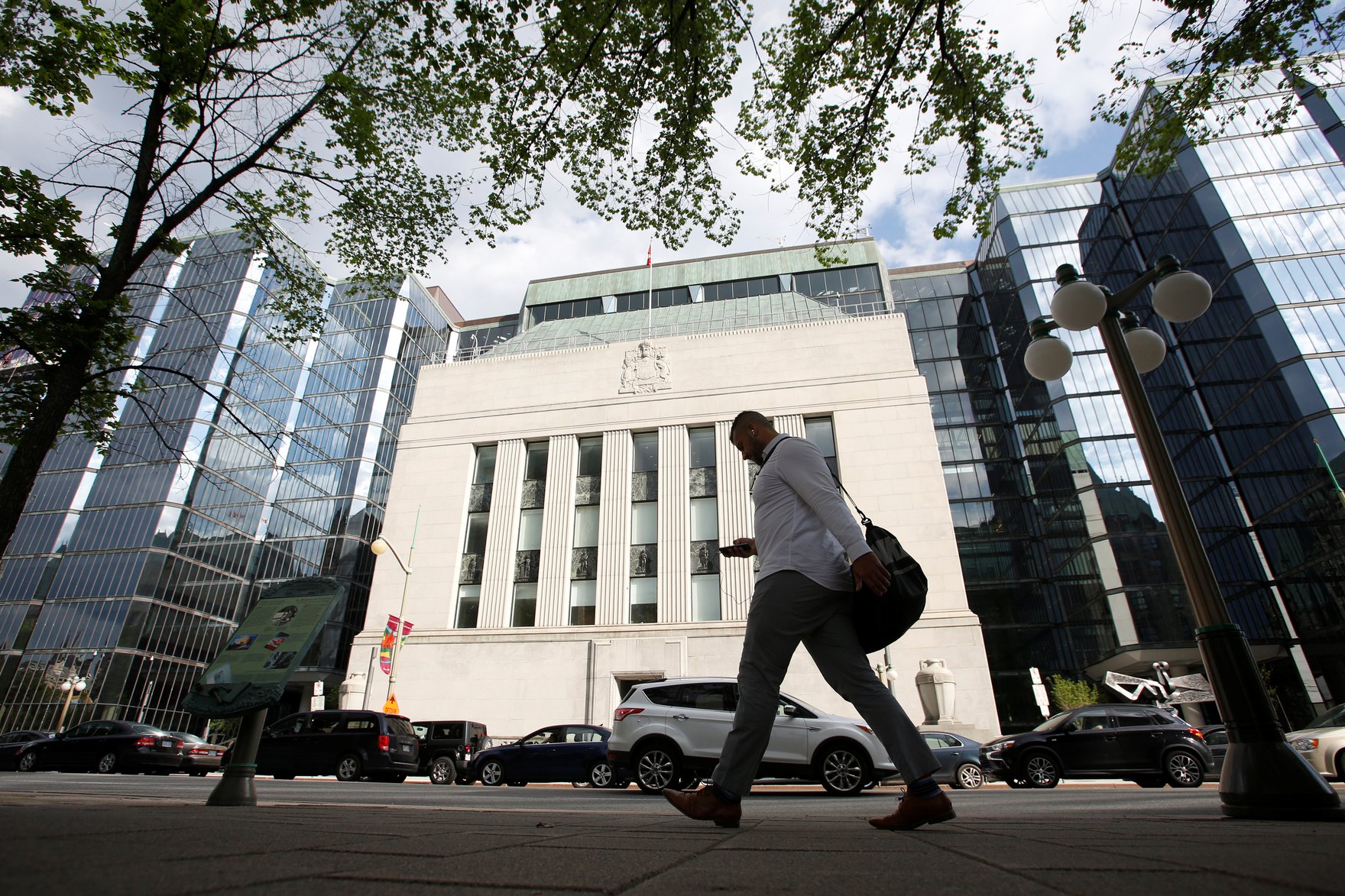Late last February, Timothy Lane, the Bank of Canada deputy governor in charge of financial technology, made the two-hour trip from Ottawa to Montreal to join a one-day rendezvous of chartered financial analysts. His objective: to clearly mark where he and his colleagues stood on the idea of creating a digital version of cash.
“We have concluded,” Lane told the lunch conference crowd, “that there is not a compelling case to issue a CBDC at this time.” CBDCs, short for central bank digital currencies, had become a popular subject of academic debate in 2019, in part because the People’s Bank of China had indicated that it intended to issue one. The Bank of Canada, Lane explained, had no such plans. “Canadians will continue to be well-served by the existing payment ecosystem, provided it is modernized and remains fit for purpose.”
Lane didn’t completely close the door on a CBDC. He said that Bank of Canada officials would continue to study the idea, but in a relatively relaxed manner, as it appeared that time was on their side.
Facebook’s bid to launch a unit of payment that could be used like cash across its vast network was sputtering, as regulators had scrambled to slow Facebook’s advance. With the main competitive threat from the private sector tethered, at least temporarily, the only other thing that would force central banks to rush their work on CBDCs would be a dramatic shift in consumer behaviour, and there was no evidence of that in the early weeks of 2020. In fact, data suggested that most Canadians preferred buying things with cash.
Then the coronavirus pandemic swept into Europe and North America.
When Lane spoke in Montreal on February 25, outbreaks of coronavirus disease 2019 (COVID-19) were emerging in Italy and other places in Europe, but Canada and the United States were still largely untouched.
A week later, the Bank of Canada would cut its benchmark mark interest rate by a half point, kicking off what would become the most aggressive deployment of monetary stimulus in its history.
“At that point, we really didn’t have any idea how completely everything would be overturned by this,” Lane told me in an interview on November 24. “It’s been a long nine months.”
While fighting the deepest recession since World War II has been the primary focus of most central banks, the COVID-19 crisis also sparked a new feeling of urgency among the banks to come up with a road map for the introduction of digital cash. The lockdowns that governments ordered to slow the spread of the virus accelerated the shift to a digital economy. Households, left with little choice but to shop electronically, found that they liked it. There may be no going back. As e-commerce goes mainstream, it follows that the demand for payments systems as cheap and convenient as cash will grow, perhaps exponentially.
In October, seven central banks, together with the Bank for International Settlements (BIS), published a report on the “foundational principles” of CBDCs. They pledged to continue providing cash “as long as there is public demand,” and declared that “cooperation and coordination are essential to prevent negative international spillovers,” such as “digital dollarisation,” or a destabilizing rush to the US dollar that would be facilitated by an electronic version of the greenback. “Given the speed of innovation in payments and financial technology, this group recognises the need to prioritise this work appropriately and proceed quickly,” they reported.
Given the apparent inevitability of CBDCs, I asked for an interview with Lane, a key member of the group behind the BIS-sponsored report, for context on how COVID-19 has changed his thinking about digital currencies. Here’s an edited transcript of that conversation.
You said that it’s been a long nine months. How have those nine months changed your thinking, or the bank’s thinking, about CBDCs?
In February, we identified two scenarios that we would want to be prepared for. One of them was the disappearance of the acceptance of cash, and the second was the emergence of digital currencies that might turn out to be disruptive in some way or might undermine Canada’s monetary sovereignty.
I would say that in the last nine months we’ve seen developments that look like they’re in the direction of some of those things coming to pass sooner than expected. In particular, we’ve seen a shift away from the use of cash transactions much more rapidly than previously we thought was likely. How much of that is temporary, just associated with the pandemic, and how much of it is the start of a new trend, I think, remains to be seen, but certainly that’s something we’re watching very closely.
We’re doing surveys with increased frequency on payments behaviour and generally sort of stepping up our work to analyze those changes. I think the other thing that has changed is the acceleration of the move to a digital economy. Online shopping has got a really big boost from this whole period. We’ve also seen more automation — at least, incentives to automate some processes and so on. That may also move us closer to a time when we may need to consider having a digital version of cash.
It’s hard to say at this point how lasting and how big a trend this is going to be, but on balance it seems to push forward in some of the directions that we identified.
We’ve seen a shift away from the use of cash transactions much more rapidly than previously we thought was likely. How much of that is temporary, just associated with the pandemic, and how much of it is the start of a new trend, I think, remains to be seen.
How are you approaching this shift from a risk-management standpoint? You say you aren’t sure how many of these shifts are permanent, but you must have to assume they are permanent?
There are two parts to that. One of them is we step up our monitoring. We are much more systematic in the tracking of developments, both in terms of payments space, but also in terms of the use of cash. That’s really important. The other part of it is getting to a state of readiness to issue a central bank digital currency if the decision were taken to go ahead in that direction. So we’ve got a work program where we’re hiring people; we’re exploring technologies; we’re launching discussions with a number of stakeholders, both in the public and private sectors and civil society, to try and understand these trends, but also to get a clearer idea of how a central bank digital currency would work, how it would mesh with other means of payment that are available and generally to step up our exploration of this full area.
It’s fair to characterize the situation as being more urgent than it was in February, right?
We’ve said that there’s a sense [that] definitely things are moving ahead more quickly. Although we don’t know how long they’re going to persist, it’s more urgent for us to make sure that we’re ready if we have to be ready. So, our work definitely has to move forward.
Do you have a deadline for being ready? Is there a point out there on the horizon by which you feel you need to be ready?
We’re not really there yet. We’re still not really in a position to say at what point we would do this. I think you have to understand that to do it properly, there is significant lead time, anyway, because you have to make sure you’ve got all the technology working, that you’ve got the security, you’ve got the legal arrangements and everything else that has to be done right.
And also that you understand the risks. People have talked about the potential that this could have effects on the financial system that are different from what we might have imagined. For all of that, we really need to make sure that we’ve done a thorough job of preparing. So we’re not setting out a particular deadline by which we have to do this, but we certainly need to move forward at a pretty good pace to make sure that we’ve done our homework before we face an actual decision point.
My feeling when you addressed this subject back in February was that the pressure was coming from the private sector. The reason to get serious about CBDCs was that there was at least one private group out there that was lining up to give the central banks some competition in this space. Now it feels like perhaps consumer behaviour is the pressure point. Which of those is, in fact, the driver for this sense of urgency that you and your counterparts are reflecting now?
Well, I’d say the two go hand in hand. You’ve got private companies that are obviously going to be looking for opportunities to take advantage of the changes in consumer behaviour. That said, we put out the two scenarios — one was sort of the decline of cash, and the other was the entry and rapid adoption of a private digital currency, like Libra, the one that Facebook’s been talking about, or possibly the adoption of a digital currency created by a different central bank. Those scenarios are still there.
But, underlying that, if the public actually has a desire to use something that has the attributes of cash but that can be used electronically, then that could also be a case that would lead us to consider this much more seriously. Changes in household behaviour are obviously going to be drivers of these decisions.
I have a few questions about what I’ll call the “BIS group.” How did that come about? When did that group of central banks first get together and decide to work on this issue?
This was last year. A group of governors was talking about it. It wasn’t any predefined grouping. In fact, initially the BIS wasn’t part of it. They joined after the group was already formed. The BIS provided the facilities to help with the meeting. Originally, the group was convened by Benoît Coeuré, who was then at the European Central Bank and later ended up at the BIS, and Jon Cunliffe, who was and still is at the Bank of England. They kind of organized the work.
Then there were subgroups that were working on the substance. One was led by me and one was led by Cecilia Skingsley of the Swedish central bank, the Riksbank. It was a coalition of central banks that were exploring this issue, which were at different stages in terms of their thinking about it, but acknowledged that there would be some benefits to getting our heads together and talking about some of the issues. We had a series of meetings in the earlier part of this year.
Basically, this work was carried out in the early months of this year and then the paper was worked up and refined. The BIS provided some support for the whole operation. Initially it was a group of governors, but then it was tasked to the group that I mentioned to carry it forward — hence the report that came out in October. So, that’s kind of how the work proceeded
What was the subgroup that you led focused on?
Well, the part that I was involved in — and this is in the report — it was more on the how — how would you do it. There were sort of two parts. One was whether and what would be the motivations [to do it], and if we did it, then what would it look like — what would be the technology and the business models, and what functionality it might have.
Why this particular group? Why not a smaller one? Or a larger one?
For one thing, I think all the central banks are all kind of like-minded and in similar places in terms of their thinking about it. I would say ourselves, the Bank of Canada, and the Riksbank are probably furthest along in terms of our own research programs on it. The other ones are kind of obvious: the European Central Bank, Bank of Japan, Bank of England, all the West central banks that create their own [currency], that are responsible for a particular currency. Of course, there are a number of central banks within the euro area that are interested, but they don’t have the sort of ultimate authorities for creating a currency, so they were not part of the initial group. The Swiss national bank was also an obvious player, given their financial system. It was definitely an ad hoc group. It wasn’t organized around the Group of Seven or the Group of Twenty or the Financial Stability Board or any of the other usual group settings. It was sort of a coalition of interested central banks.
Is it problematic that China is not part of the group?
In some ways it was easier that China wasn’t part of the group, because they’re clearly moving ahead on a different track. They’ve already got a very heavily digitized payment system with Alipay and WeChat Pay, and they’re already at a stage of doing pilot projects and launching their own projects. So it was more straightforward to have the group that we did have.
What’s the right way to think about what China’s doing in regards to a CBDC? You hear a lot of people say they are worried about it. Are you worried about it? The backdrop for this question, obviously, is the issue that you alluded to earlier in our conversation, and in the report, about the possibility that a central bank, or another country’s currency, could become a magnet, instead of Libra or another private currency.
I would say we’re a little less concerned about that, just because, first of all, the Canadian dollar is a reserve currency in its own right. There’s not a strong incentive for Canadians to want to transact in renminbi unless they have financial and economic dealings in China. So the risk of something that’s denominated in renminbi becoming a major payment vehicle within Canada is really not one that we’re very concerned about.
In a lot of ways, something that’s been a private money denominated in Canadian dollars or an official money denominated in US dollars would have greater potential to have serious traction in Canada, just because of the nature of the economic linkages that Canada has.
In some ways it was easier that China wasn’t part of the group, because they’re clearly moving ahead on a different track.
At the same time, thinking about China’s central bank digital currency project, I think there are things we can learn from them. Certainly, they’ve already kind of leapfrogged other payments models with their digital payments media, the ones that are referred to. Partly, they didn’t go through a stage of having a well-functioning, bank-based payment system [as] we currently have. They went straight to this much more rapid electronic payments system with their big tech companies, and at this point the central bank is in the process of developing a product that’s becoming a part of that digital payments ecosystem. So, it’s not a model that is directly applicable to Canada, but it’s one that certainly we and others are watching and interested in how it may evolve.
In terms of the global financial system, is it not a huge advantage for China to be so far ahead of everyone else?
The Chinese economy is big enough that even something that is only usable in China, it’s going to already have a very large market. At the same time, there are countries that China has closer economic ties with where there could be more use of a renminbi-based digital currency. I don’t really know if that’s part of their intent or not, to promote a greater use of the renminbi in electronic payments in other parts of the world.
There’s a report out from the European Central Bank that flags the first-mover advantage in regards to CBDCs. What do you think of that argument?
That’s a bit of a mixed picture, actually. At some level there could be an advantage. In the whole payments area, there are network externalities, in the sense that a product becomes widely used, a lot of transactions gravitate to that product. On the other hand, there are also advantages to being a follower, because you can observe the lessons from the earlier movers. At this point, for Canada, there could be advantages to being at least in the first wave, but not necessarily at the beginning of the first wave.
If it does turn out that there are CBDCs, and it turns out the public actually wants to use digital money that’s in digital form, then there could be advantages to Canada to not having a long delay before we develop something that could be used by the public. At the same time, there could also be advantages to us to be able to learn from other central banks that move sooner. That’s something I think we need to consider as we get closer to a decision point.
Assuming that the Canadian public, or the Canadian government, decides it wants a CBDC, what’s the biggest barrier to getting there, based on what you’ve observed, based on all the thinking you’ve put into this subject? What’s going to be the hardest part in getting there from here?
Certainly there’s a lot of work that would need to be done in terms of the technologies that would work and developing something that would be robust and not just one that would work now; if you're building something now, then you would need to have something that would be adaptable as the system continues to change with new technologies. So that would be something that would require quite a lot of work.
One very fundamental issue is the whole privacy question and the fact that privacy is obviously something that the public values and is one of the reasons they like to use cash.
So, finding that sweet spot — where you’re actually fulfilling a need, but not turning the Bank of Canada into the sole financial intermediary — is something that I think would require a lot of careful planning and management.
The notion of something that’s as private as cash and fully scalable is one that I think would not really slide, because it then would become a vehicle for all sorts of illicit transactions. So, designing something that would have a degree of privacy that’s acceptable to the public and is compliant with privacy regulations, but [that] would also be compliant with the safeguards against money laundering and terrorist financing and all the potential illicit uses of a digital currency, I think it would require further work to develop it. I think it’s feasible, but it’s something that would be a major challenge. Another aspect is the whole question of adoption, the fact that you would want to develop something that the public would want — because otherwise what’s the point — but you would not want to develop something that was so popular that it completely displaced the rest of the financial system.
So, finding that sweet spot — where you’re actually fulfilling a need, but not turning the Bank of Canada into the sole financial intermediary — is something that I think would require a lot of careful planning and management.
Two last questions, and they’re opposite sides of the same coin. I’d like to hear from you the best reason to do a CBDC. And then I want to hear from you the best reason not to do one. So, first, why embrace a CBDC, all things being equal?
Well, if we did it, we would do it in order to continue to provide Canadians with a means of payment that they can use with confidence. And if there are changes in technology that either enable us to do that better, or that would undermine our ability to continue to do it, then we would have to go there.
The reasons for not doing it would be either because we’re not actually fulfilling a need that the private sector can’t already fulfill, or because developing a digital currency would in some way be disruptive. Disruption within manageable limits is not necessarily a bad thing, but it has to be kept at a level where it can be managed and maintain the stability of the whole system.
I have heard — and this is the final question, I promise — I have heard some people say that CBDCs represent a solution in search of a problem. Do you agree?
No. I think that it’s a potential tool. We would not introduce it if we didn’t feel that it could address a real issue. Largely the issue is: How is the system changing in response to changes in technology? And I think part of the issue here is that as long as there have been central banks, they’ve issued cash, they created something called banknotes. Cash is obviously a very simple, effective — but not up-to-date — format. So I think part of the question is, if we don’t modernize cash to keep up with changing technology, then do we leave a gap in the system? Is there some purpose that cash fulfills that we would not be fulfilling if those things change. That in itself would be a problem.




